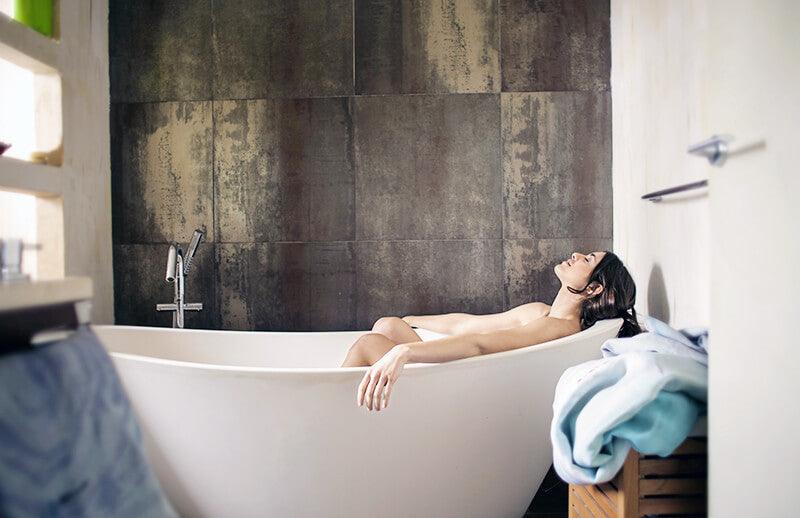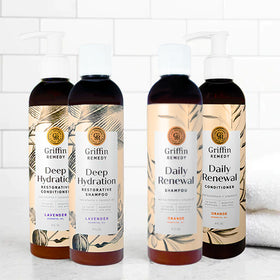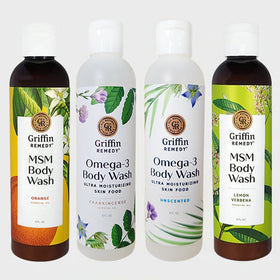
How Water Can Benefit Your Health
It’s not just for drinking anymore. Check out these four creative ways to use water to improve your health.
Q: I’ve always felt like water has healing powers. Other than just drinking more of it, what are some of other ways to benefit from water?
Humans are 60 percent water, and water is one of the most essential nutrients for our health and well-being. Of course, we need to drink water throughout the day, but water can also be applied to the skin for therapy through a wide variety of techniques.
Water immersion (such as swimming or snorkeling) is extremely calming to the nervous system. In Germany, boys diagnosed with hyperactivity disorders are often sent to summer camp, which keeps them in a cool lake for much of the day. I absolutely love the simplicity and effectiveness of using alternating hot and cold water, or, when tight on time, just plain cold water, as a general tonic. The main idea is that cold causes blood vessels to constrict temporarily (to conserve precious body heat). After removing your body or body part from contact with cold water, a reverse reaction quickly kicks in. The blood vessels open up, flooding the treated area with fresh blood containing nutrients, oxygen, and white blood cells—a magic elixir required for physical healing.
Here are a few more water therapies that I use frequently and are easy to add to your routine:
Cold-Water Walking
If you have an outdoor stream nearby, that’s the best. Otherwise, use your bathtub or a Rubbermaid-type tub large enough to stand in comfortably. (I generally do my whole-body skin brushing routine while the water is filling.) Run cold water at least ankle deep, and walk in place for 60 seconds. Then get out of the tub and pat dry.
It’s a great way to start your day—who needs coffee after this cold dip? Once you learn to love this morning routine, consider increasing the bracing effect by sitting down in the cold water for another few seconds. I like to splash into my armpits (lymph nodes near the surface there) and up to my mid-back (where the adrenal glands sit, above the kidneys). If this routine (which really only takes a few minutes) is too much, then try rinsing with cold water for 30–60 seconds when you shower. It’s an excellent habit to acquire and will keep your skin glowing, your hair shiny, and your energy primed.
Frozen Socks
This simple technique works on folks of all ages—including the young—at the onset of mild colds and flu. Thoroughly dampen a pair of cotton socks and put them in the freezer. I like to put frozen juice cans inside the socks to make them easier to put on later. At bedtime, place the frozen socks on your feet, and then put on a pair of wool or fleece socks (wool is best) and go to bed.
When covered with wool, damp socks draw congestion from the head and chest and work overnight to stimulate the circulatory and lymphatic systems. The socks will dry overnight as the body brings warm, fresh blood to the feet. This invigorates the immune system by increasing white blood cell production, which helps to fend off acute illness. Magic socks can be used several days in a row to nip an acute respiratory illness in the bud, or more frequently to treat insomnia. Be cautious about using this treatment for anyone who has compromised circulation in the feet, such as inadequately treated diabetes or neuropathy. The therapy could well help these ailments, but check with your doctor first.
Steam Inhalation
This is a fantastic technique to relieve sinus congestion—with a fringe benefit of getting a nice facial as well! You’ll need steaming hot water, a large pot or bowl, a large towel, and some essential oils or herbs (fresh or dried). I particularly like the “pizza” herbs thyme and oregano for steam inhalation, since they’re broad antimicrobials that can help knock out bad bacterial and fungal infections.
Bring at least 3 cups of water to a boil, pour into the large bowl, add the herbs, and allow to steep for 5–10 minutes. There’s no need to steep if you are using 5–8 drops of the best indicated essential oils—thyme, oregano, eucalyptus, and peppermint are all terrific to relieve upper-respiratory congestion, and mints are cooling, so they’re a good choice with redness or other heat signs.
Place the bowl carefully on a table, pull up a chair and place your face (closed eyes) over the steam with the big towel draped over your head and shoulders and the bowl, trapping the steam inside the tent you have created. Find a relaxed position leaning on your forearms and simply breathe deeply for 3–10 minutes. This therapy can be used several times daily. After feeling the sinuses and lungs open up, consider splashing your face with cool water to close the pores.
Soaking Baths
Everyone loves a warm bath. Enhance this time-honored relaxation experience with Epsom salts (magnesium sulfate) to promote muscle relaxation and detoxification. The benefits of Epsom salts aren’t just folklore. Numerous studies have demonstrated the profound and wide-ranging benefits of magnesium and sulfate.
Almost all of the biochemical pathways in the body that promote detoxification
require the element sulfur. Native Americans prized natural sulfur springs for their curative powers. It has been said that pneumonia can be cured by inhaling the vapors of a sulfurous hot spring. Magnesium is the second most abundant mineral in a healthy body after calcium, and most of us are deficient. (Calcium, among its other actions, promotes muscle contraction, while magnesium promotes muscle relaxation.)
You should also experiment with essential oils in your bathwater. Lavender is especially lovely for emotional calming. Frankincense (boswellia) is helpful for reducing inflammation, improving complexion, reducing respiratory congestion (including soothing asthma), and relieving nervous tension.
If you can’t stand disrupting the end of your bath time with a whole-body cool rinse, at least consider rinsing your feet in cold water after your bath and before you go to bed to close the pores and keep your heat in without feeling sweaty in bed.




